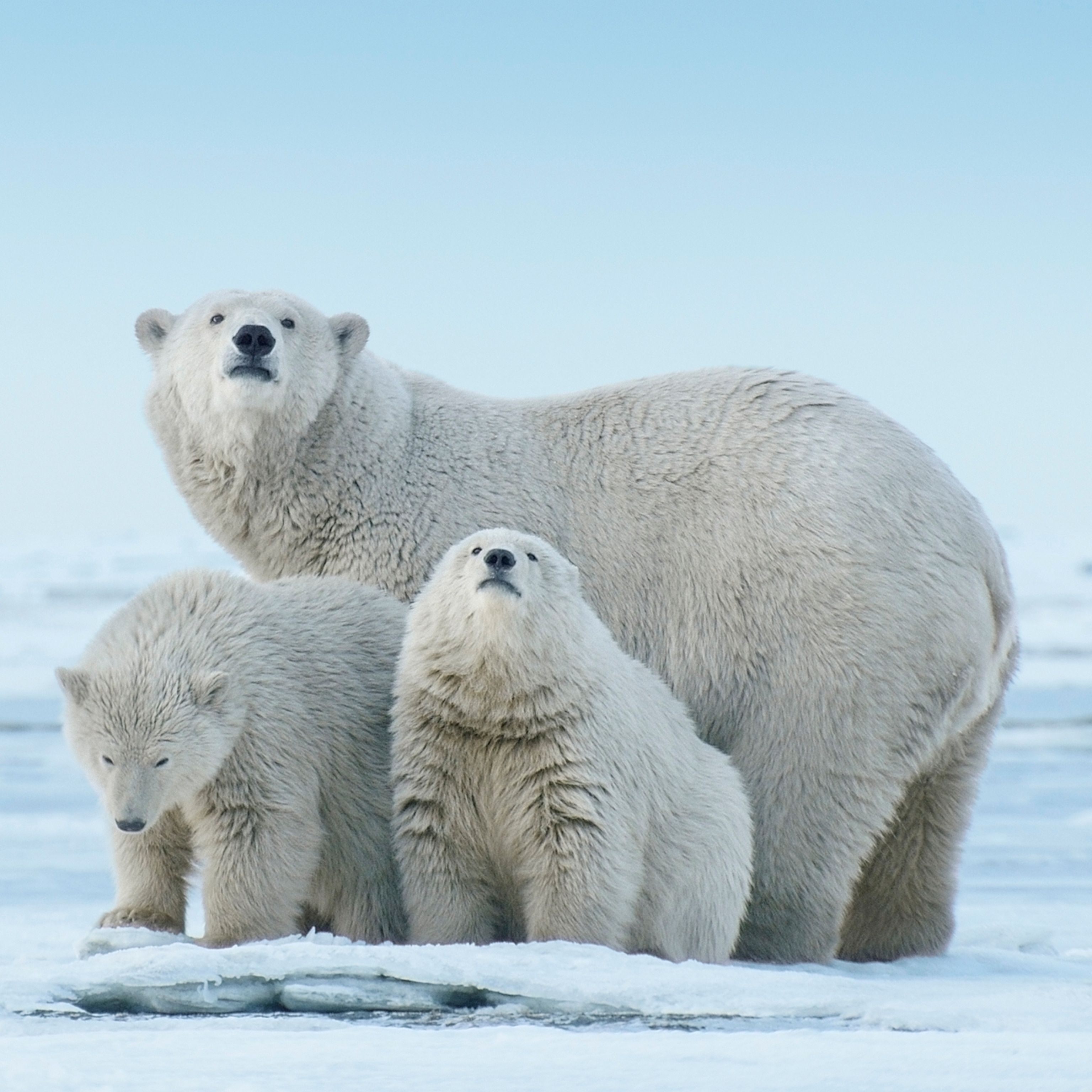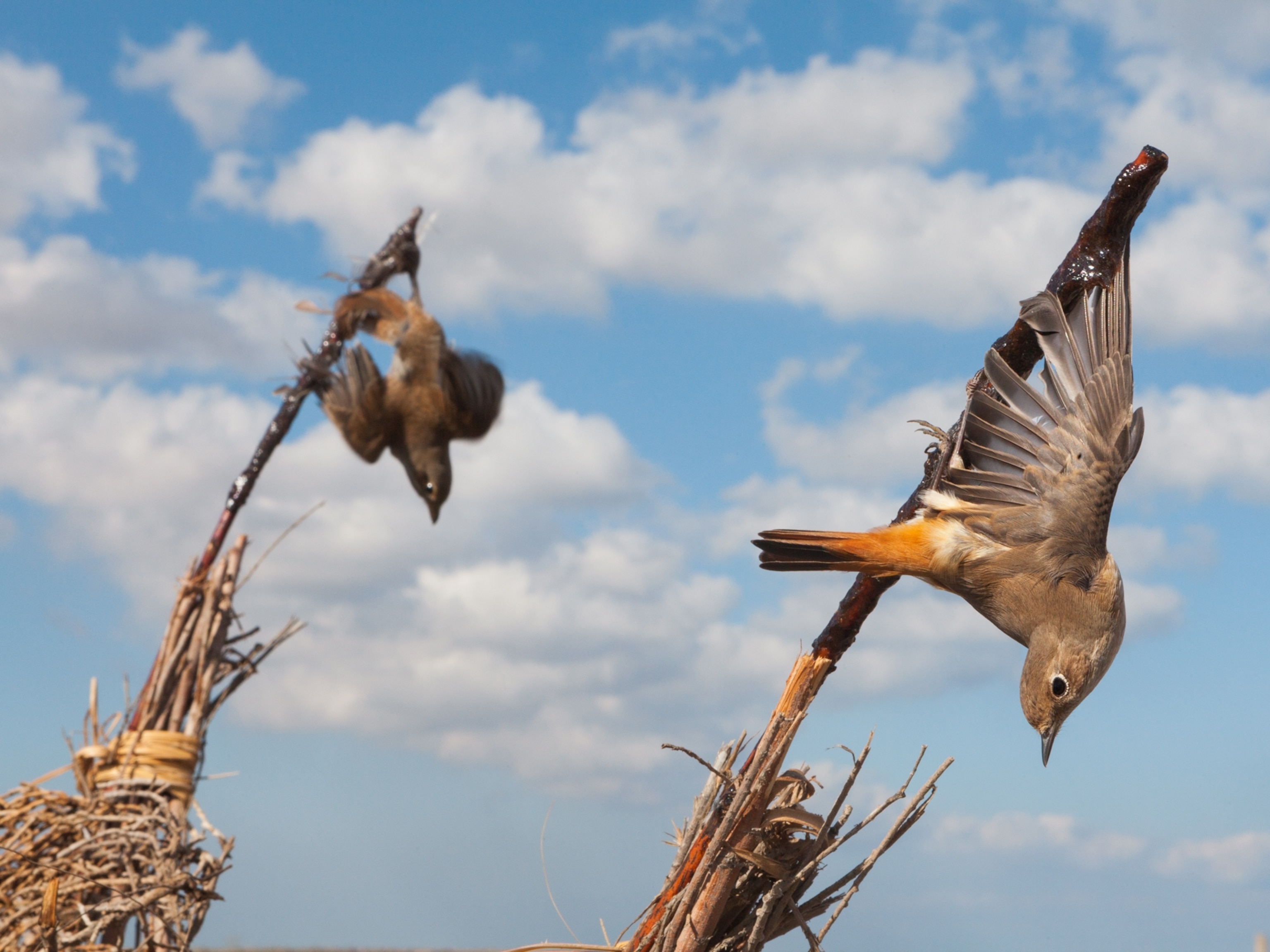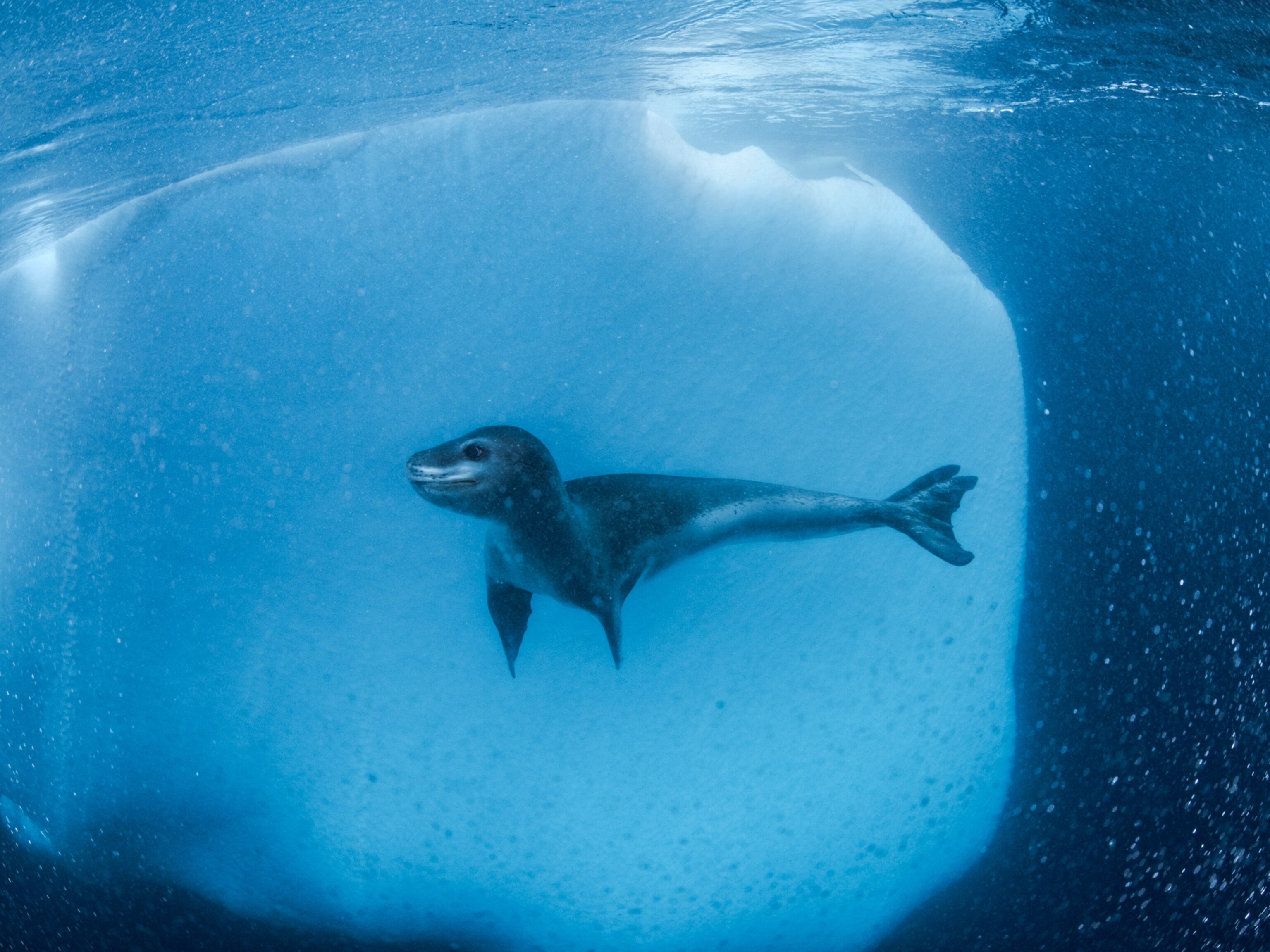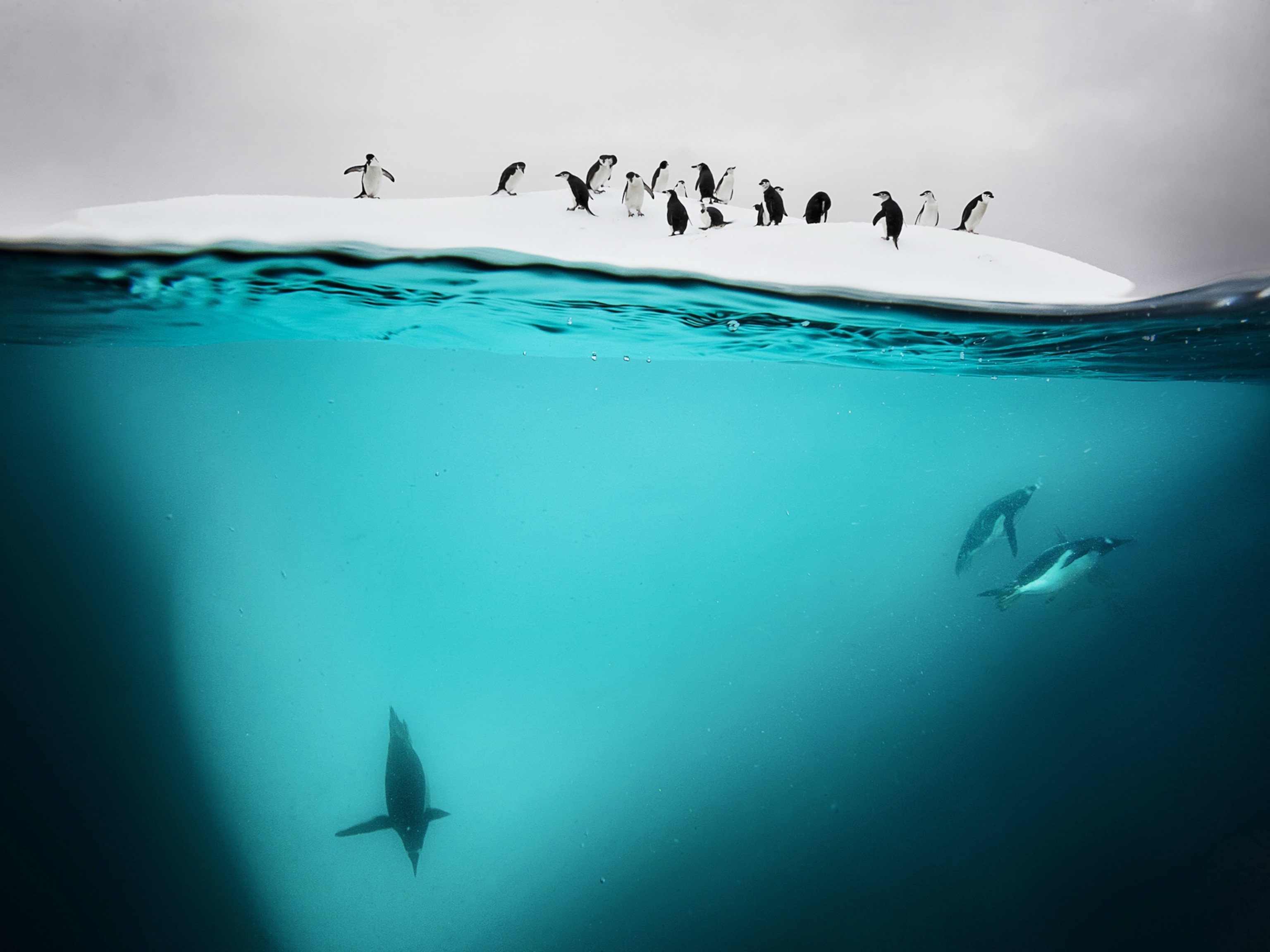
The Epic Journeys of Migratory Birds
We’re learning more about what they endure as they fly thousands of miles—and how humans and climate change are making it tougher for them.
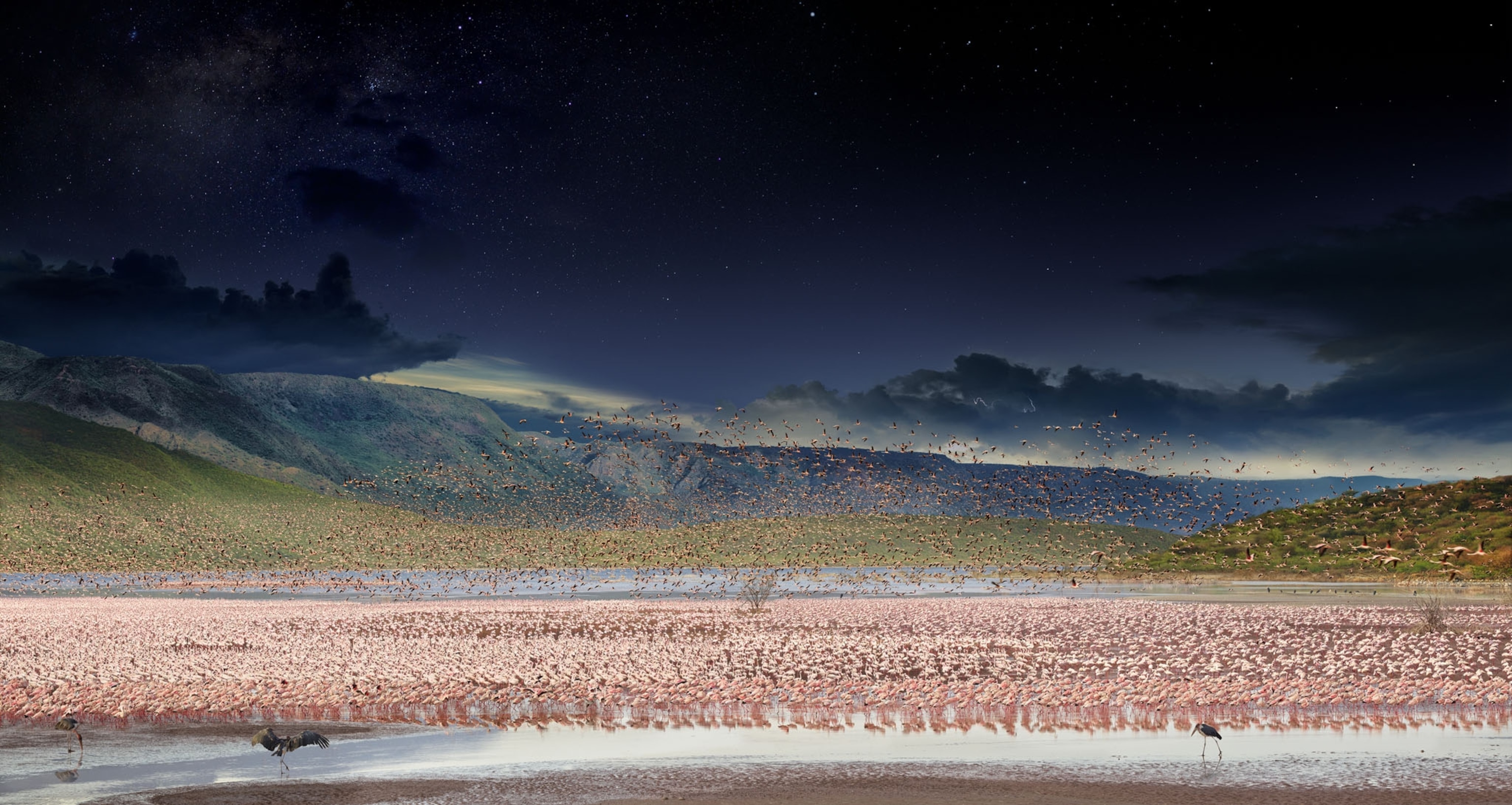
As the sun was setting over the Firth of Thames in New Zealand, dozens of bar-tailed godwits shuffled about lazily on the edge of the bay, the wind fluffing their feathers.
The tide was coming in, submerging the mudflats where the birds had been feeding, sticking their long bills into the soft earth to dig up worms and crabs. As the water advanced, they stopped foraging and waded ashore, inelegantly carrying their plump, butterball bodies on stilt-like legs. A bit homely and ungainly, with drab plumage, godwits appear quite ordinary. As the sky turned orange, they settled down to roost. Resting for hours on end, they can seem rather sedentary.

Nothing could be further from the truth. Six months earlier, these birds had made an epic journey to get here, flying all the way from Alaska. Astonishingly, they didn’t stop along the way. For eight or nine days straight, they flew, beating their wings the entire way: about 7,000 miles, more than a quarter of the way around the world.
When the godwits arrived, they were bedraggled and emaciated. They had fattened up now for their migration back to Alaska, where they breed during the summer. They were going to fly about 6,000 miles, to the Yellow Sea. There they would spend about six weeks along a coastline split between China, North Korea, and South Korea, feeding and resting before flying 4,000 more miles.
Bar-tailed godwits have made this migration for thousands of years, but a clear picture of their travels has emerged only in the past few decades. Although migrations by birds have been a source of wonder for centuries, new scientific findings are helping to demystify them while adding to our appreciation of these incredible feats. At the same time, scientists are discovering how human activity and climate change are disrupting and possibly imperiling these ancient journeys.
The disappearance of godwits from New Zealand during the months when they breed led the Maori to view godwits—which they call kuaka—as birds of mystery. The sentiment is reflected in a Maori saying about the unobtainable: “Who has ever held the egg of the kuaka?” By the 1970s bird-watchers and biologists suspected the godwits in New Zealand were the same ones that nested in Alaska. But it was only in 2007 that scientists were able to determine the migration routes.
Researchers Bob Gill and Lee Tibbitts, wildlife biologists with the U.S. Geological Survey, were part of a team that captured a small number of godwits and implanted satellite transmitters inside an air sac in their abdomens, leaving the antennas sticking out. Between March and May, they tracked a group on their northern migration. The batteries of the transmitters weren’t expected to last beyond the summer, and sure enough, one by one, they stopped working. Except one. On August 30, 2007, a godwit known as E7 departed from Alaska, still transmitting its position.
With a rising sense of excitement, the researchers followed the bird’s progress as it flew past Hawaii, past Fiji, and then, on September 7, past the northwestern tip of New Zealand. “It was a nail-biter because the battery was failing,” recalls Tibbitts. That night E7 landed in the Firth of Thames. At eight days and eight nights, and 7,150 miles, it’s still the longest nonstop migratory flight ever recorded. “It is a head-scratching, jaw-dropping feat,” says Gill, now an emeritus scientist with USGS.
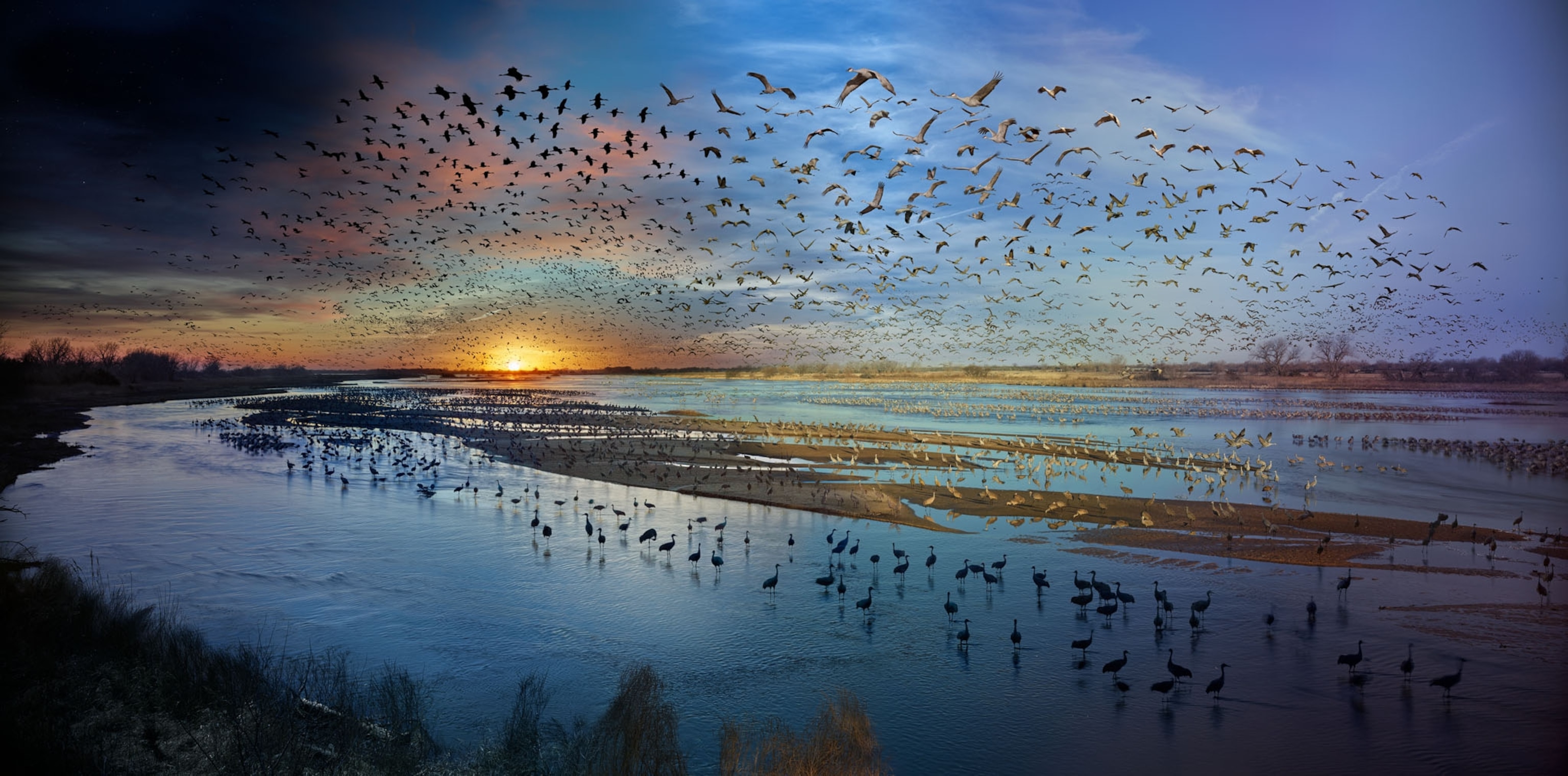
The tracking of E7 served to deepen the curiosity that bird migrations have long inspired. Where do they go? How can they fly as far as they do? How are they able to find their way to the same winter and summer sites year after year? Advances in satellite tracking and other technologies are enabling researchers to explore those questions in unprecedented detail.
Trekking through the splendidly green boreal forest in Alberta, Canada, Michael Hallworth, an ecologist with the Smithsonian Migratory Bird Center in Washington, D.C., listened for calls of the Connecticut warbler—a songbird with a yellow breast and striking white eye-rings. When Hallworth and his fellow researchers spotted a male they had tagged with an electronic device, they worked swiftly to drape a fine net between two trees. Hallworth placed a speaker behind the net, connecting it with a cable to his phone. Hiding behind a tree, he played a recording of a male warbler’s song. It was a ruse to lure the warbler to see whether a competitor had entered its territory. Sure enough, the tagged male flew into the net.
Extricating the bird, Hallworth gently removed the tag on its back—a geolocating device weighing less than one gram that continuously records light levels. Because sunrise and sunset times change with location, scientists can analyze the data to trace the path a bird has taken. The study by Hallworth and his colleagues, still ongoing, will enable them to determine precisely where the songbird spends the winter months. “We know that the bird migrates to South America, but we have yet to find out where,” he says.
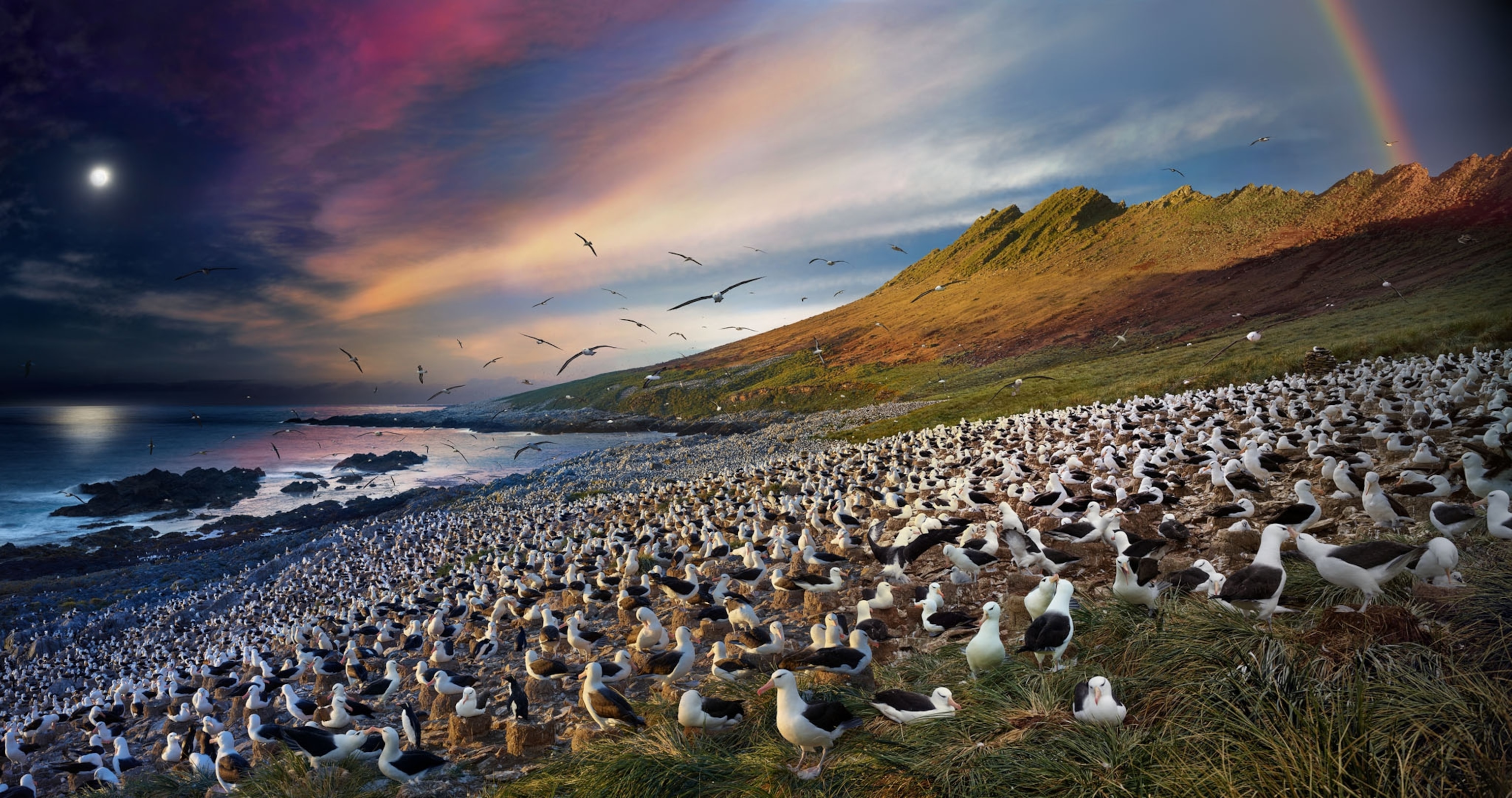
Such efforts underscore how far we’ve come in our ability to track bird migrations. Until the early 19th century, theories to explain the disappearance of bird populations for part of the year were rather fanciful. Aristotle believed that some birds hibernated or transformed into other species. In medieval Europe the explanation for the appearance of barnacle geese in the winter was that they grew on trees. An English minister theorized in the 17th century that they flew to the moon. The most striking evidence that birds were migrating came in 1822, when a hunter in Germany shot down a white stork with a curious appendage—an arrow impaled through its neck. The arrow was from central Africa, leading naturalists to conclude that the stork had traveled thousands of miles. In 1906 bird-watchers started putting rings on the legs of white storks and began learning where they wintered in sub-Saharan Africa.
In the two centuries since the shot that felled the impaled stork, scientists and bird-watchers have uncovered the migrations of thousands of avian species. Nearly half of known bird species are migratory, moving from one habitat to another with the change of seasons. Laysan albatrosses nest on tropical islands in the Pacific and spend almost half the year soaring thousands of miles, as far as the coasts of Japan and California, to look for food. Populations of bar-headed geese that breed in the highlands of Central Asia fly south over the Himalaya—honking their way through the rarefied, high-altitude air—to winter on lakes and estuaries on the Indian subcontinent. Having a large wingspan is not a prerequisite, as evidenced by the flight that tiny ruby-throated hummingbirds make. They travel solo from their breeding range in the United States and Canada to wintering grounds ranging from southern Mexico to Panama.
The Year of the Bird
In 1918 Congress passed the Migratory Bird Treaty Act to protect birds from wanton killing. To celebrate the centennial, National Geographic is partnering with the National Audubon Society, BirdLife International, and the Cornell Lab of Ornithology to declare 2018 the Year of the Bird. Watch for more stories, maps, books, events, and social media content throughout the year.
Whether they’re going a few miles or a quarter of the way across the world, birds migrate to escape conditions that threaten their survival. When winter arrives in North America, the flowers that the ruby-throated hummingbird drinks nectar from and the insects it thrives on vanish. The bird has no choice but to travel to a place where food is plentiful. Upon the return of warmer weather in Canada and the United States, the northern home is attractive once again because its resources have been replenished.
Although many species migrate between cooler and warmer latitudes, some migrations are driven by flooding. That’s the case with a subspecies of the black skimmer that nests on exposed sandbars in the Amazon Basin’s Manú River, skimming the waters with its long bill to scoop up fish while flying. When heavy rains begin lashing the region starting in September, causing the river to flood, the birds depart for the continent’s Pacific coast or migrate to higher ground, returning when the water level has subsided. Some bird populations migrate between high and low altitudes within the same area, nesting in mountains when streams are running but descending to valleys when the water is frozen.

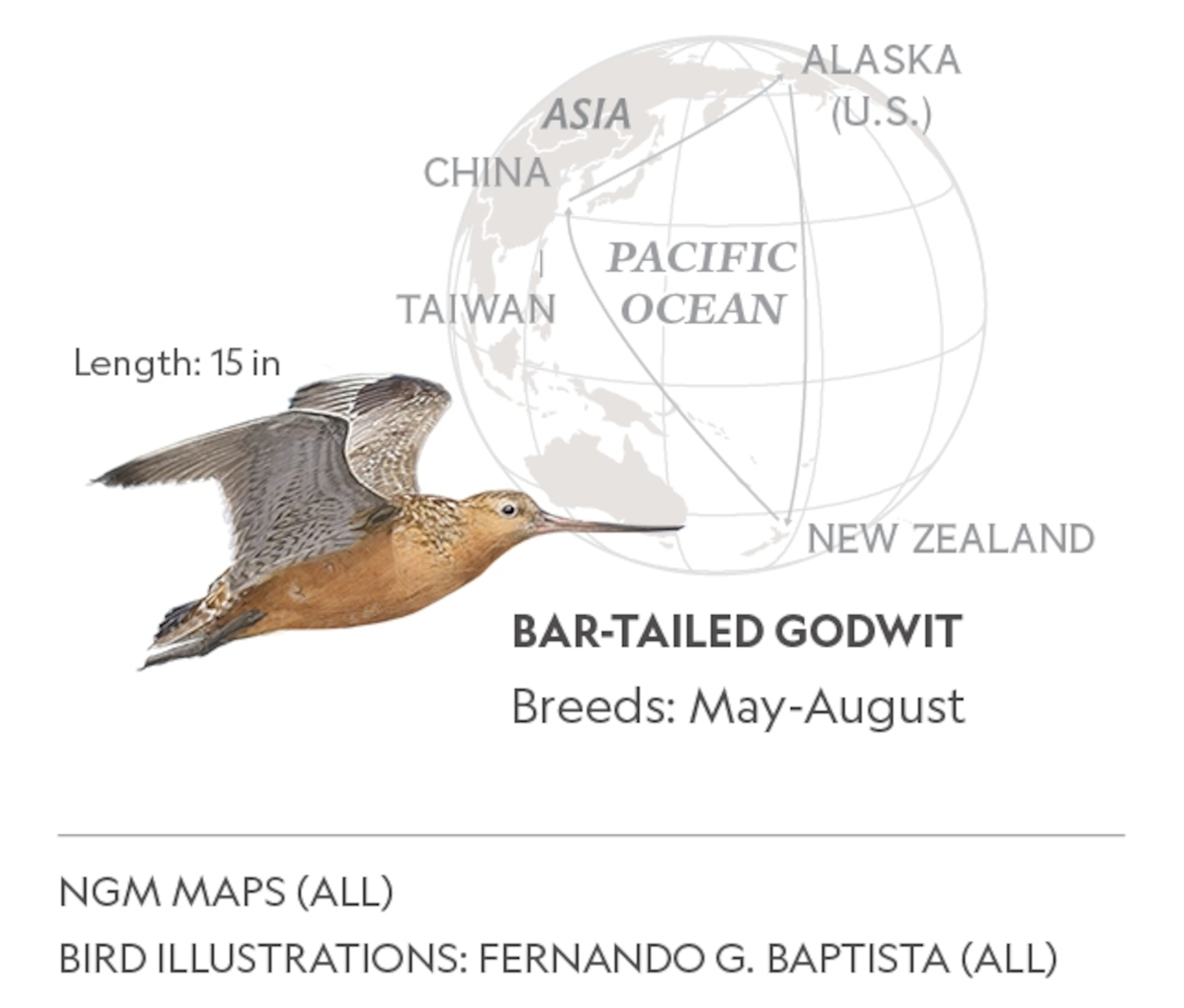
“Migratory birds are both escaping and then coming back to these areas that are really harsh during part of the year, as well as really great for breeding and raising their young during the other part of the year,” says Ben Winger, an ornithologist at the University of Michigan in Ann Arbor.
These migration routes have emerged over thousands of years of adaptation. Driven by competition for resources and nesting areas, some species are likely to have ventured farther and farther from their original habitats. Some researchers speculate that migrations arose when birds in the tropics expanded their ranges into temperate habitats. Another view is that many species originated in temperate zones and evolved to spend the colder part of the year in the tropics. “The reality is probably that both happened to some extent,” Winger says.
Clues to adaptations that led to today’s routes can be gleaned from certain unusual migrations. One example, according to Peter Berthold, former director of the Max Planck Institute for Ornithology in Radolfzell, Germany, is the sojourn of a population of marsh warblers that travels from northern Germany to East Africa and spends several weeks there before heading to South Africa. “In former times the birds could winter just south of the Sahara because the area remained green for a long time—it was a paradise,” Berthold says. “Then it deteriorated, until the birds were forced to go farther and farther south.”
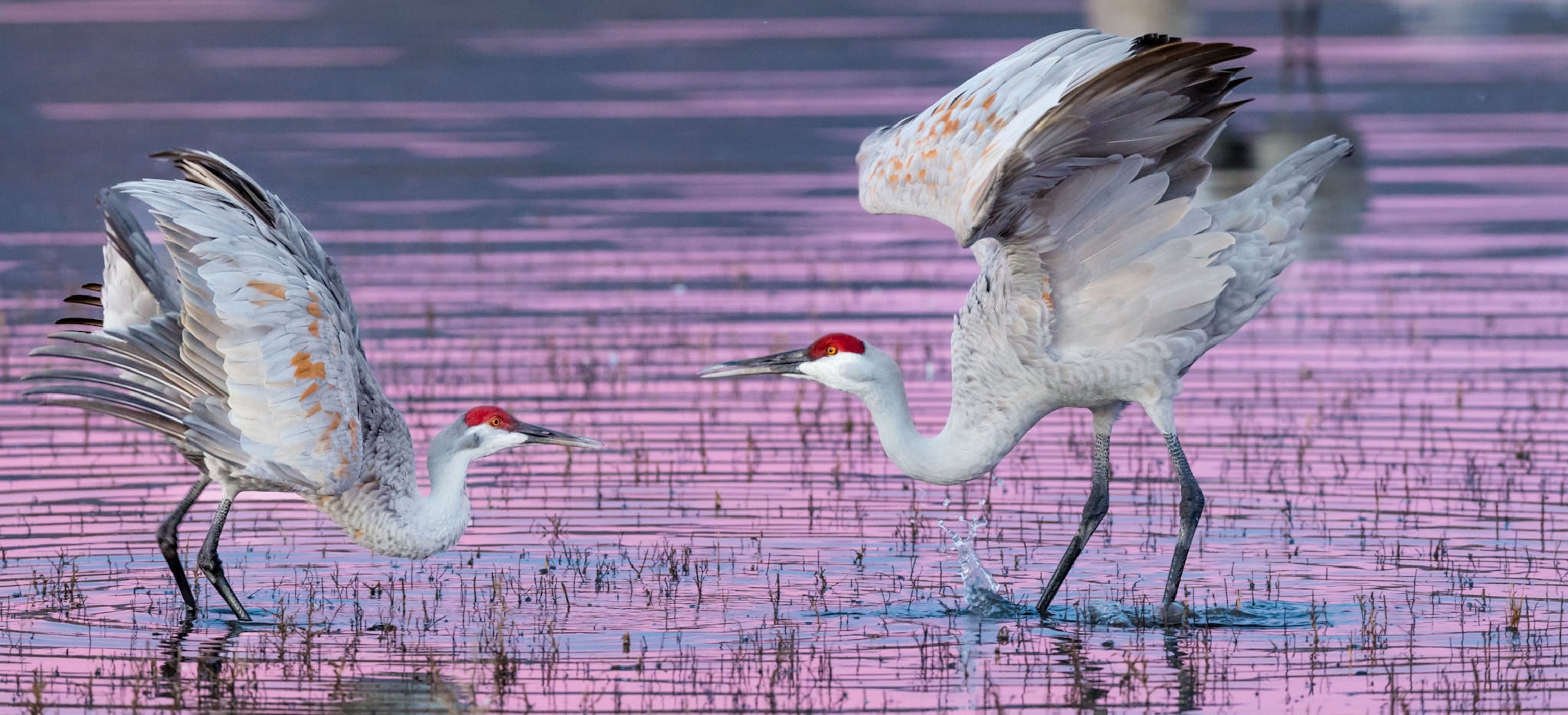
Are these migratory behaviors written into the genes, steering birds like automatons to their destinations? Or do young birds learn from adults where to migrate and how? Scientists don’t know yet, but as with most nature-versus-nurture questions, the answer is likely to be some combination of the two. “The field is in its infancy,” says Jesse Conklin, a research scientist at the University of Groningen in the Netherlands.

The ordeal of flying nonstop from Alaska to New Zealand is hard for the human mind to comprehend, so when Gill talks to grade school kids about bar-tailed godwits, he uses a gimmick to get them to imagine the endurance needed to make that journey. “I say, ‘All right, please stand up and extend your arms and start moving them in circles, and see how long you can do that.’ ” Then, just as their arms begin to tire, Gill tells them, “Now try and do that for eight days straight.” The arm-flapping simulation may not be the perfect analogy—because flying is to birds what walking is to humans—but the kids get the point.
Like other long-haul migrants, godwits prepare by building enormous reserves of fat in the weeks leading up to their departure. The equivalent of gasoline, fat is what fuels the birds. When the godwits leave, more than half their body weight is fat. They look like feathered croquet balls, with a layer of fat under the skin up to an inch thick and more fat encasing their abdominal organs. “I call them lard asses,” says Phil Battley, an ornithologist at Massey University in New Zealand.
As they fatten up, their pectoral and leg muscles also grow larger. Other long-distance migrants, such as red knots, shrink the gizzard and other organs in preparation for flight—the equivalent of jettisoning excess cargo.

Godwits, like other migratory species, don’t rely just on their own power; they also take advantage of winds. The birds tend to depart from Alaska on the tail end of storms that produce winds blowing south. Their departure from New Zealand also coincides with favorable conditions for traveling. “You get pretty benign winds when you leave New Zealand,” Gill says, “but then they are able to hook into others as they go north.” When they leave the Yellow Sea for Alaska, the winds once again have shifted to be with the birds.
Researchers assume that godwits, which are not known to soar, flap their wings for most of their journey, even when riding winds, while other species, such as albatrosses, do soar.

Some species possess an astonishing flexibility in regulating their sleep. Niels Rattenborg at the Max Planck Institute and his colleagues went to the Galápagos Islands to study the sleeping habits of great frigatebirds, which have seven-foot wingspans and fly hundreds of miles over the Pacific Ocean looking for food. The researchers, capturing frigatebirds in their nests, implanted sensors to track brain electrical activity and glued data-recording devices on their heads before releasing them. Besides keeping track of location and altitude, the devices helped the researchers determine sleep patterns.
After spending up to 10 days over the Pacific, the frigatebirds returned to their nests and Rattenborg’s group retrieved the devices. The data showed that the birds slept in short bursts lasting an average of 12 seconds, usually while soaring, that added up to an average of 42 minutes a day. That was a mere fraction of the 12 hours a day the birds slept when they were in their nests. For a substantial part of the time that they napped in the air, the birds only put half of their brain to sleep, while keeping the other half awake.
To learn whether godwits rely on similar sleep patterns in flight, researchers need considerably smaller batteries—a goal Rattenborg says is within reach. “It’s possible that they get some sleep on the wing, perhaps even while flapping,” he says.
As a young boy growing up in Denmark, Henrik Mouritsen occasionally saw birds that didn’t belong there. He once photographed a desert wheatear, some populations of which divide their time between breeding grounds across Central Asia and wintering habitats from North Africa to India. “I wondered what the hell had gone wrong in their heads for them to fly that far in the wrong direction,” he says. That curiosity led Mouritsen, now a professor at the University of Oldenburg in Germany, to follow in the footsteps of generations of researchers who’ve sought to untangle the mystery of how birds orient themselves to return to the same breeding and wintering grounds. Scientists looking for the secret to this capability have found evidence of not one but several mechanisms birds appear to use.
In 1951 a German scientist named Gustav Kramer discovered that European starlings relied on the sun as a compass. Then, in the 1960s, Stephen Emlen, an ecologist at Cornell University, put indigo buntings in a planetarium and showed that, like ancient mariners, birds also look to the stars to navigate. Around the same time, laboratory studies of European robins by a German zoologist couple, Wolfgang and Roswitha Wiltschko, discovered that birds possess an internal magnetic compass.
Mouritsen, along with two colleagues—William Cochran and Martin Wikelski—conducted an experiment in 2003 to investigate navigation in thrushes migrating in the wild rather than hopping around in a lab. Initially, however, the researchers placed the birds in an outdoor cage at sunset, exposing them to a magnetic field that was turned between 70 and 90 degrees east relative to the Earth’s. The birds, fitted with tiny radio transmitters, were set free at night, after no sunlight remained in the sky. Traveling in cars equipped with antennas to track the birds, the researchers followed them for up to 700 miles. As it turned out, the birds flew west instead of north on the first night of their travel. But on later nights, the same birds flew north, as they were supposed to. From this behavior, the researchers inferred that the birds were orienting themselves using their magnetic compass, but calibrated it daily with twilight cues from the sun.
That migratory species would rely on multiple compasses is not surprising: Many travel at night, when the sun compass doesn’t work. In cloudy conditions at night, the celestial compass can’t be counted on either. Nor is the magnetic compass a reliable fallback everywhere.

The precise mechanics of the godwit’s navigation strategy is not yet known. But Mouritsen speculates that, like the thrushes in his outdoor experiment, godwits rely on their magnetic compass and reset it every time the sun is visible.
A red knot looks a lot like a bar-tailed godwit, except that it’s smaller and has a shorter bill. Like the godwit, it breeds in the extreme north and flies thousands of miles south for winter. It forages along the shore by sticking its slender bill in the mud to find mollusks. That’s why Jan van Gils, a marine ecologist with the Royal Netherlands Institute for Sea Research who studies a subspecies that breeds in the Arctic and winters in Mauritania, was puzzled when he and his colleagues observed some of the birds eating sea grass. When had they become primarily vegetarian and why?
The researchers found that these red knots were juveniles, with shorter bills and smaller bodies than usual. They also discovered that the body size of juveniles varied considerably by year. Those born when the Arctic experienced the warmest temperatures had the smallest bodies and the shortest bills. The most plausible explanation was that these birds didn’t have enough to eat as chicks because the snow had melted earlier than usual, which caused the insect population the birds feed on to peak too soon and robbed the newborns of nutrition.

When they migrated to Mauritania, the birds with short bills couldn’t reach deep in the mud to find enough mollusks. “Sea grass is a poor source of nutrients,” van Gils says. “We never expected them to eat it, but now they’re eating it because they have no choice.” The researchers also found that red knots with short bills have shorter lives. “Food shortage in the Arctic eventually leads to dying from food shortage in the tropics,” he says.
The red knot study is one of a few that offer concrete evidence of how climate change and environmental damage may be harming migratory species. Populations of many seabirds have shrunk drastically over the past half century, while shorebird populations in North America have crashed by 70 percent since 1973. Some of the sharpest declines have occurred in species that use the East Asian-Australasian Flyway—a group that includes knots, sandpipers, and godwits. A leading cause for this appears to be the ongoing destruction of stopover sites along the Yellow Sea, where the tidal mudflats that sustain the birds are being filled in at a frenetic pace to build ports, factories, and housing.
Similarly, illegal hunting and changes in land use have imperiled migrants that journey between Europe and Africa, and between North and South America. Conservationists estimate that from 11 million to 36 million birds are captured or killed in the Mediterranean region alone every year, threatening birds like the chaffinch and the blackcap. The winter habitats of many long-distance migrants in sub-Saharan Africa have become less hospitable, with more land being cleared of vegetation to make room for agriculture. The industrialization of farming at stopover sites has left migrating birds struggling to find food. In southern Europe, for instance, the countryside had clusters of small farms with wild spaces in between, which served as an abundant food source. Now the landscape has been homogenized into vast acreages planted with a single crop like corn and harvested more efficiently.
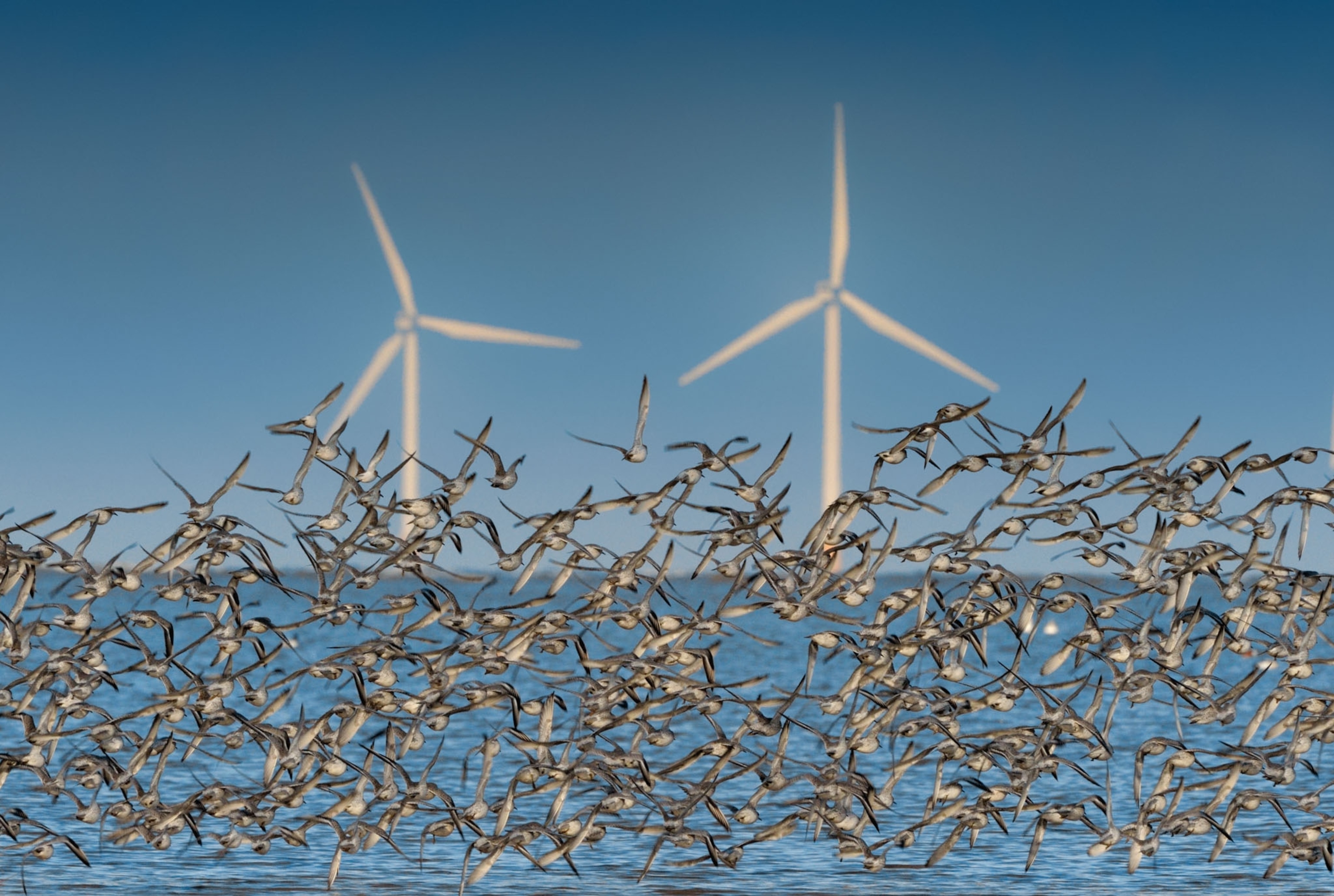
“Every single corn is used up, so there is nothing left over,” says Hans-Günther Bauer, a research scientist at the Max Planck Institute. “If you are lucky, as a bird, you find someplace else. If you are unlucky, you don’t, and that makes it very hard because you need to build up your reserves for the journey ahead.”
Reversing these alarming trends would require a diversity of conservation efforts—from protecting forests and coastlines to enforcing laws to prohibit the capture and killing of migratory birds. The use of new tracking technologies, including ever smaller geolocating tags, could help target conservation efforts, says Pete Marra, head of the Smithsonian Migratory Bird Center. “Population size in a species like the wood thrush, a species that’s declining by over 60 percent in the past 50 years, is influenced by what’s happening in the breeding areas in the southeast United States, as well as habitat loss in the wintering grounds in Mexico and Colombia.” Researchers found that although forests in the wintering habitat were being decimated more quickly, the birds suffered more from the loss of forest in their breeding range.
On a bright afternoon in Foxton Beach in New Zealand, Jesse Conklin, wearing rubber boots and a floppy sun hat, walked out toward the salt marsh in the Manawatu River estuary, splashing through puddles of ankle-deep water left behind by the receding tide. About 30 yards from a sand embankment, where a half dozen godwits were roosting, Conklin set up a telescope on a tripod.
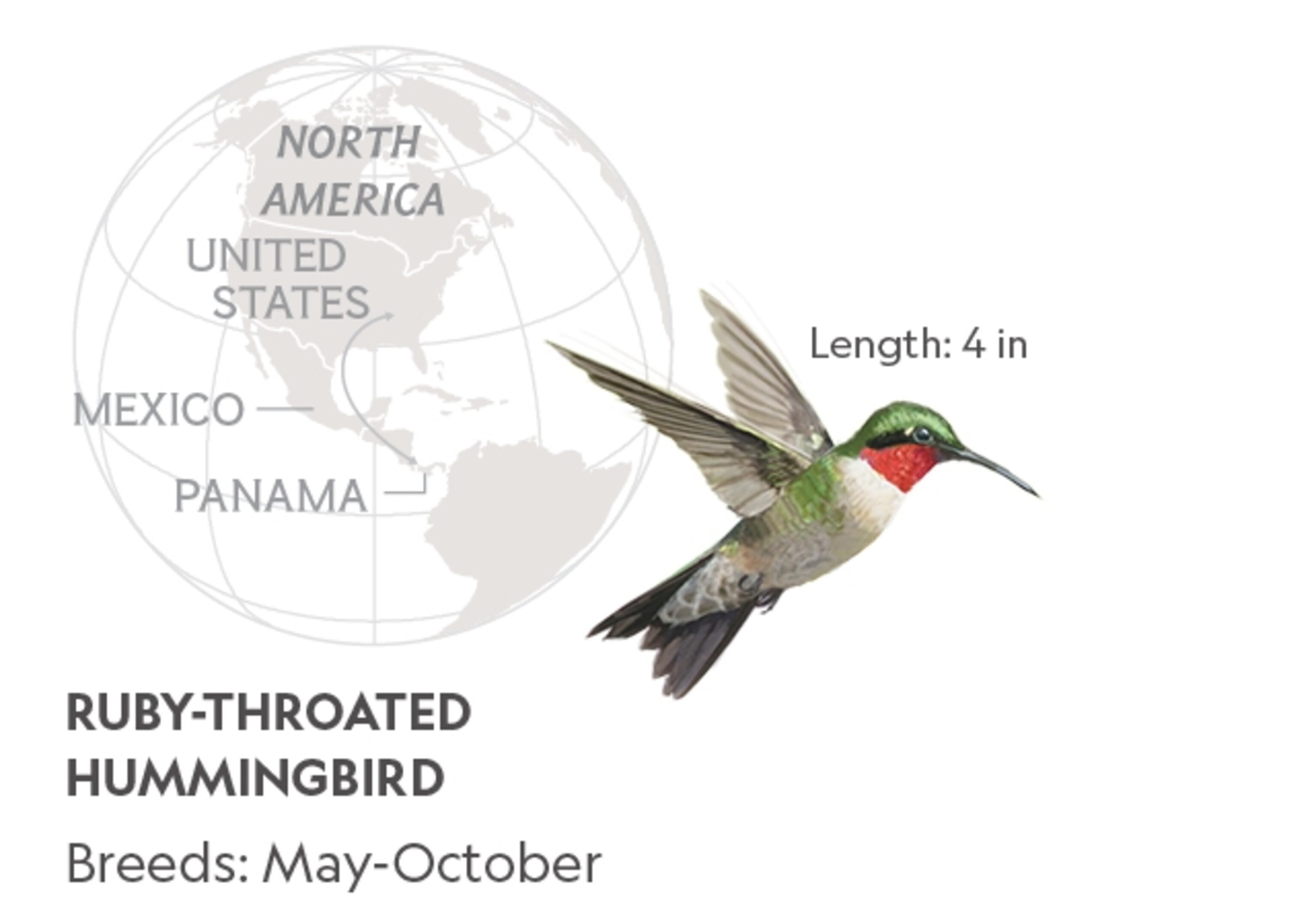
The Netherlands-based scientist has visited the estuary every year for the past decade. Conklin has tracked about 160 godwits—identifiable through colored bands on their legs—that return year after year. He’s found that individual godwits leave on almost the same day each year, as if guided by a precise clock, although they’re flexible enough to shift their departure date to avoid unfavorable wind conditions.
Over an extended period, however, the birds have advanced their departure from the estuary. Conklin’s godwits now leave an average of five days earlier than they did from 2008 to 2010. Many are spending the extra days bulking up at degraded foraging sites on the Yellow Sea, arriving in Alaska at about the same time. It’s unclear if they set out early because they need extra time at the stopover sites or because they’re trying to get to Alaska earlier to keep up with the advancing summers. In either case the godwits appear to be learning from experience, Conklin says, not just following a genetically programmed schedule.
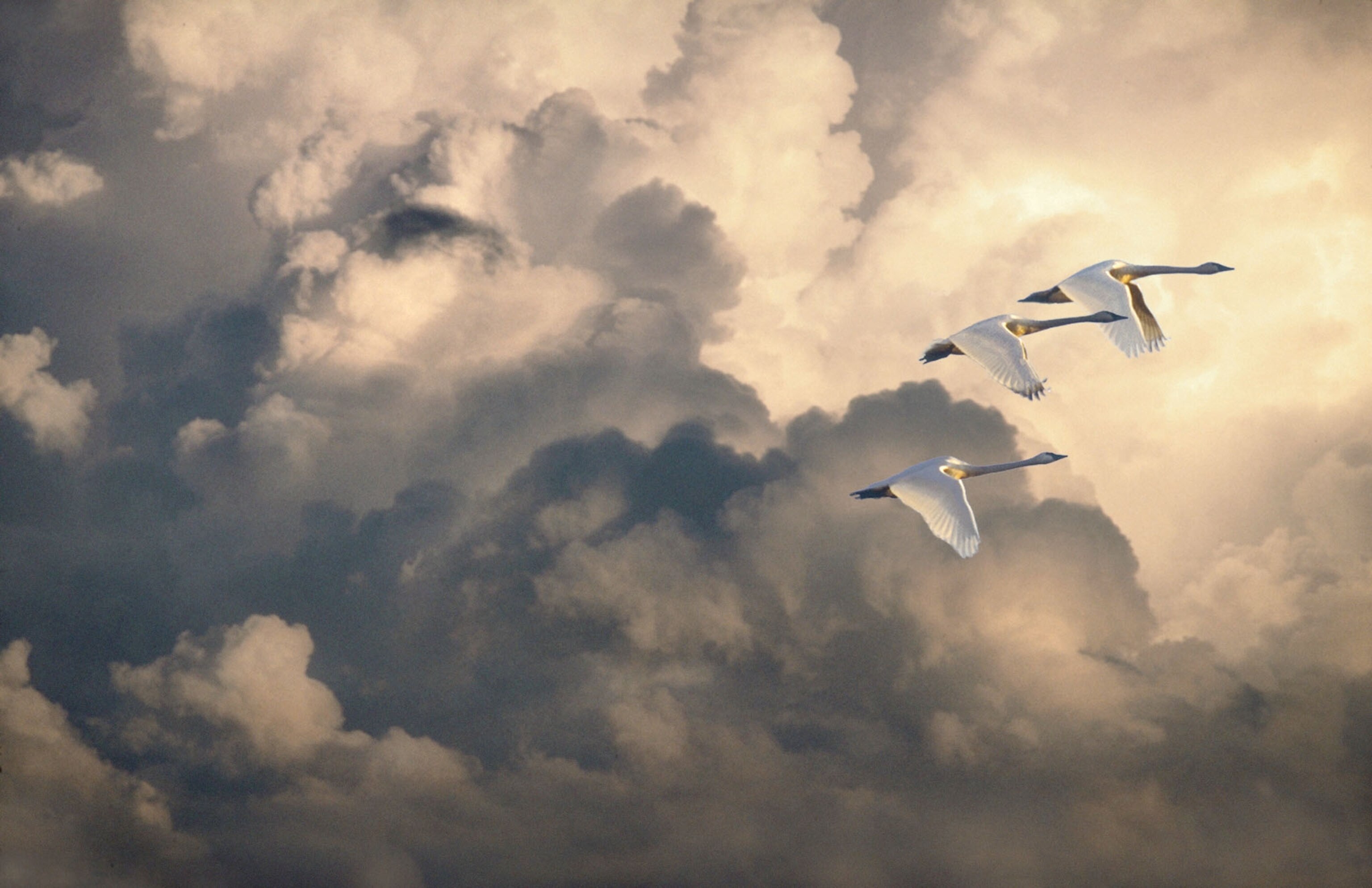
For hours that afternoon, Conklin trained his telescope on the godwits. Some continued to roost; others foraged nearby, dipping their bills into the mud. When a few of them waded into the water to bathe and preen, Conklin felt a familiar heightening of anticipation. He knew that this behavior could be a precursor to a departure.
The sun mellowed as the afternoon progressed, the shimmer of the water growing softer. Then, one of the godwits began making a loud, high-pitched call. Other godwits responded with similar calls. The conversation went on for hours. A couple of godwits flew over to join the group. “I don’t know if they are communicating real information—like, You like the wind now?—or if they keep this chatter going to collect all the birds that want to go,” Conklin said.
Close to sunset the calling got louder, and then, all at once, the godwits took off. He adjusted his telescope to follow them—he counted 10 in all—as they made a rapid ascent over the estuary, flying out toward the ocean, first in a jumble and eventually sorting into a V-formation. Conklin watched them until they disappeared into the pale blue sky.


